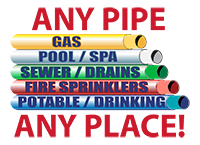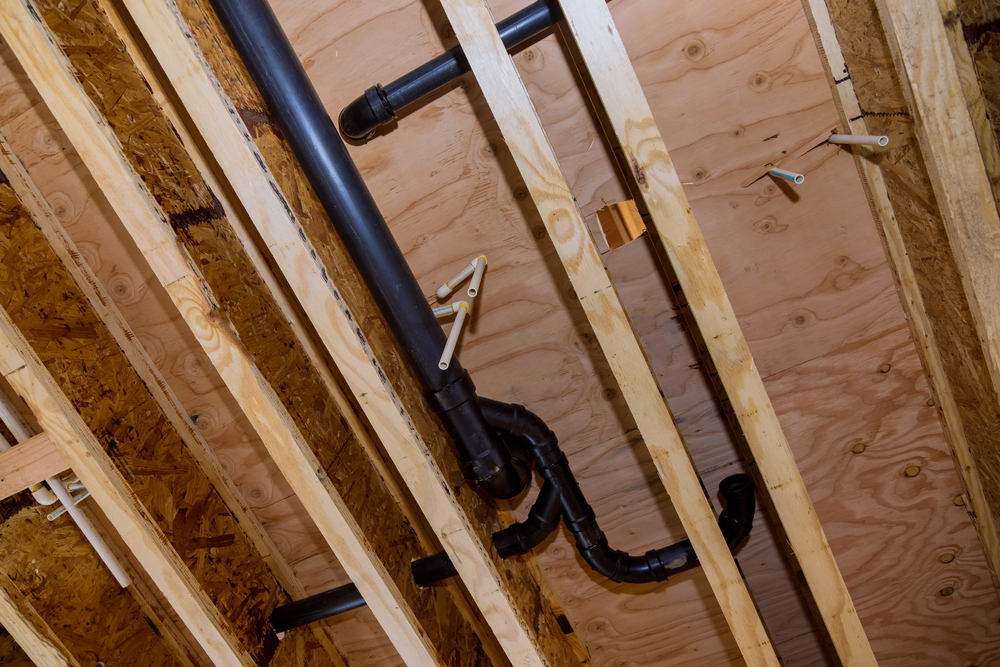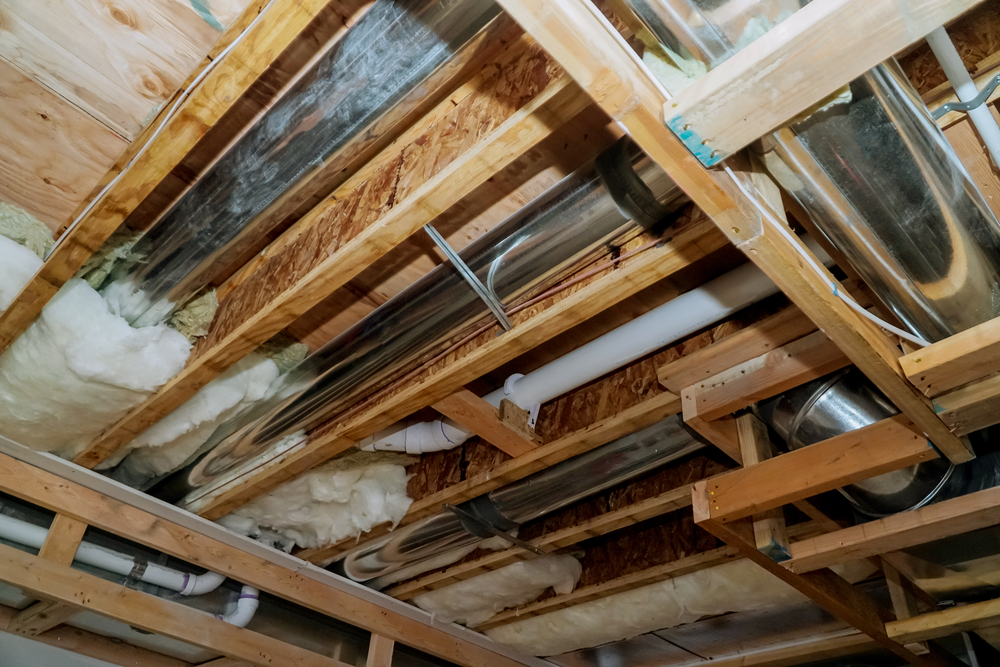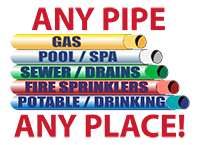Looking for information on “what is rough-in plumbing?”
If you’re a homeowner, then you know that there are a lot of different systems that keep your home running smoothly.
One of these systems is your plumbing which is responsible for bringing clean water into your home and taking waste water out.
The plumbing system has two different types of piping: rough-in and finish. In this blog post, we’re going to explain what rough-in plumbing is and how it differs from finish plumbing.
What is rough-in plumbing?
Rough-in plumbing is the initial phase of plumbing installation in new construction. It typically involves the installation of water supply and drainage lines, as well as ventilation piping. Rough-in plumbing is usually installed before the finishing phase of construction, which includes the installation of fixtures, faucets, and appliances.
Rough-in plumbing is an important part of the overall plumbing system in a new home or commercial building. Getting the rough-in phase done correctly will ensure that the finished plumbing phase goes smoothly.
It includes installing the:
- main stack, which is the vertical pipe that carries water and waste to the sewer or septic system
- branch lines, which are the horizontal pipes that connect to the main stack and run to each fixture
- rough-in for each fixture, which is the portion of piping that connects the branch lines to each individual fixture.
After the rough-in plumbing is installed, a plumber will install the fixtures themselves, as well as any trim work or finish work required to complete the job.
While some homeowners choose to do it themselves, rough-in plumbing is usually done by a licensed plumber.
Tools and materials required for rough-in plumbing
The rough-in phase is typically completed before the walls and floors are installed. This ensures the plumbing can be easily accessed for repairs or modifications in the future.
Both power tools and hand tools are used by plumbers when installing rough-in plumbing. A tubing cutter is used to cut copper pipes. while emergy cloth (a type of sandpaper) or wire brushes are used to clean copper pipes. Soldering tools or a handheld torch may be used to solder copper.
Rough-in plumbing will also call for a good set of pipe wrenches and mechanical fittings. These will be used to connect the various metal pipes and fittings together. A hacksaw may also be necessary to cut through pipes if they need to be shortened or fitted into tight spaces. Other tools that may be needed include a screwdriver, hammer, and level.
Hacksaws or chop saws are typically used to cut vents, waste, and drain lines.
The main material needed for rough-in plumbing is a pipe. There are many different types and sizes of pipe available, so it’s important to select the right type for the job at hand.
The three most common types of pipe used in plumbing are copper, PVC, and PEX. Each has its own advantages and disadvantages, so it’s important to consult with a professional before making a decision.
In general, copper piping is the most durable but also the most expensive. PVC piping is less expensive but more susceptible to leaks. PEX piping is somewhere in between in terms of cost and durability.
In addition, multiple drilling and cutting tools are required such as power drills, circular saws, and reciprocating saws to secure and route pipes within the new building.
The rough-in plumbing process
The first step in rough-in plumbing is to create a plan or layout of the piping system. This plan will take into account the location of fixtures, appliances, and drains. In addition, any existing plumbing that needs to be tied into the new system needs to be factored in.
A building inspector first reviews the electrical and plumbing at the stage when the walls are not yet covered with any type of wall covering.
Inspectors may perform air pressure tests on gas and water lines in addition to inspecting the HVAC ducting.
Once the plan is complete, the next step is to install the supply lines. These are the pipes that bring fresh water into the home and are typically made of copper or PVC. The supply lines run from the main water line to each fixture location and are connected using fittings and connectors.
After the supply lines are installed, the next step is to install the drain lines. These pipes carry wastewater away from fixtures and appliances and are typically made of PVC. The drain lines are run from each fixture to an area where they can tie into an existing sewer line or be directed to a septic tank or other treatment system. Again, fittings and connectors are used to join these lines together.
Once all of the piping has been installed, it must be tested for leaks before proceeding with any further work on the project.
The rough-in plumbing process typically involves these steps:
- The floor, ceiling, and walls are left open with no drywall being installed in this stage.
- Electrical wires are run by an electrician to different endpoints such as light switches from the service panel. Wires are left unattached and bare-ended.
- At this time, a licensed plumber runs the drain and supply pipes under floors to the bathroom and kitchen endpoints such as bathtubs, showers, and sinks. This stage involves these steps:
- Underground pipes are installed after excavation from utilities to the main structure.
- The plumber routes the pipes through the wall cavities
- They then run the vent stacks to the building’s roofing system
- The next step is to link the water system and drain lines to sewer systems, main water supply systems, or septic tanks.
- Pipeline connections are completed.
- Plumbing fixtures are not installed at this point to enable inspection.
- The next step is to install insulation and HVAC equipment.
- Building inspectors examine the work before approving or failing it. If not approved, the work has to be modified after the initial inspection.
- Once approval is obtained, the drywall installation is completed. While the drywall can be removed to make any changes, it is generally preferable to complete the rough-in plumbing and other work before drywall installation.
- The end-point devices including light switches, showers, sinks, bathtubs, and so on are then installed by plumbers and electricians.
- A second visit is then made by the building inspector who will approve the building permit if everything looks okay. If approval is not given, the work needs to be corrected as per the requirement.
The rough-in phase of the project usually comes after the framing and before the finished surface materials are installed.
Rough-in plumbing is a critical part of any new construction project. It is important to make sure that all of the plumbing lines are professionally installed before moving on to the next phase of the project. If there are any problems with the rough-in, it can be very difficult and expensive to fix them later on.
How long does rough-in plumbing take?
Rough-in plumbing is one of the most important steps in any plumbing project. This is the stage where all of the pipes are installed and connected to the main water supply. The length of time it takes to complete the rough-in plumbing will depend on the size and scope of the project. Generally, smaller projects will take less time than larger projects.
Typically it can take a few days to complete the rough-in plumbing.
Important points to consider with rough-in plumbing
There are a few important points to consider when roughing in plumbing for a new construction or remodel project.
First, you’ll need to determine the location of the main water line and sewer line. This will help you determine the best placement for your plumbing fixtures. It is important to keep in mind that draining requires gravity. The best positioning for drain pipes is in a way that angles downwards. Angling too much is also a problem as the water will drain too quickly.
Next, you’ll need to choose the right pipes and fittings for your project. Make sure you consult with a professional before beginning any work. Finally, be sure to test your work before covering it up. This will help ensure that everything is functioning properly.
It is also important to note that the process of installing rough-in plumbing can be different for steel or timber frames.
In the case of a timber-framed home, holes are cut by the plumber in the timber studs to run the pipes through the walls. Choosing an experienced plumber is very important as holes in the wrong place, too many holes, or excessively large holes impact the timber frame’s integrity.
Steel frames, on the other hand, have pre-drilled holes designed for rough-in plumbing.
Another factor to keep in mind is when plumbing pipes are not secured to the building’s frame securely. This can result in a “water hammer” which is a loud hammering noise as a result of air and water moving in the pipes not properly secured.
In addition to being annoying, improperly secured pipes can lead to broken pipes, which can mean costly rework and repairs.
How is rough-in plumbing different from finished plumbing?
Rough-in plumbing generally refers to the installation of pipes, drains, and other fixtures prior to the installation of finished walls and surfaces. This type of plumbing is typically found in new construction projects. The term can also refer to the process of running new piping through an existing structure to connect to a water supply or sewer line.
In contrast, finished plumbing refers to all the visible plumbing fixtures in a home. These include toilets, sinks, and faucets, as well as the pipes and drains that supply them with water.
Finished plumbing will involve these steps:
- The plumber removes the caps placed on the water supply and drain pipelines
- Kitchen, laundry room, and bathroom plumbing fixtures are installed and connected
- Drain assemblies under the sink are set up
- New plumbing connections are sealed and tested for leaks
- Water system lines and valves are set up
Why consult a professional plumber for rough-in plumbing
If your home is in the process of being built, or if you are planning a major renovation, you will need to hire a professional plumber for the rough-in plumbing. This is a critical step in construction or renovation, and it is important to choose a qualified and experienced plumber for the job.
There are several reasons to consult a professional plumber for rough-in plumbing. This type of work requires a high level of skill and experience. Rough-in plumbing typically involves working in tight spaces. This can be difficult for homeowners who are not experienced in this type of work. attempt to do it themselves could result in serious injury or damage to their home.
Plumbers who specialize in rough-in plumbing have the knowledge and expertise necessary to ensure that your home’s water and drainage system is installed correctly.
In addition, rough-in plumbing is often challenging and complex, requiring specialized tools and equipment. A professional plumber will have the necessary tools and equipment to complete the job quickly and efficiently. They also specialize in pipeline inspection services, hydro-jetting, and other services that you may require for your new home.
Finally, professional plumbers can provide valuable advice and guidance during the construction or renovation process. They can help you choose fixtures and pipes that will meet your specific needs and budget.
Hiring a professional plumber for rough-in plumbing is an important decision that should not be taken lightly.
Rough-in plumbing experts in San Diego
At San Diego Plumbing And Pipe Lining Company, we take pride in our work. We have been serving the San Diego area for years apart from being licensed, bonded, and insured.
We offer a wide range of plumbing and pipe lining services, and we are experts in both residential and commercial applications. We are also certified in backflow prevention and sewer repair. In addition, we offer 24-hour emergency service, so you can rest assured that we will be there when you need us.
If you are in need of rough-in plumbing or pipe-lining services, please give us a call. We would be happy to discuss your needs and provide you with a free estimate.








